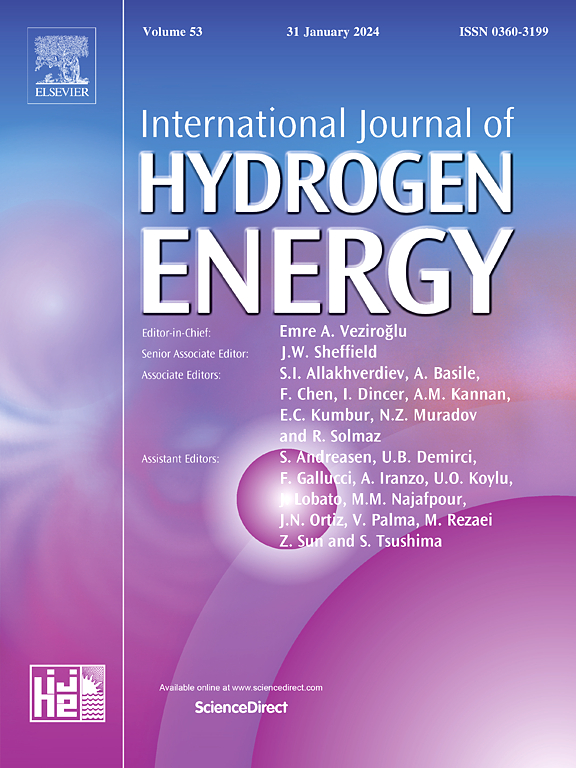Efficient anion exchange membrane direct ammonia fuel cells anode catalysts: PtIr nanocubes on carbon and CeO2 composites supports
IF 8.1
2区 工程技术
Q1 CHEMISTRY, PHYSICAL
引用次数: 0
Abstract
Direct ammonia fuel cells (DAFCs) have emerged as promising alternatives to hydrogen fuel cells for transportation applications, owing to ammonia's low source-to-tank energy cost and its inherent advantages in storage and distribution. However, current DAFC technologies are significantly limited by the kinetically sluggish ammonia oxidation reaction (AOR) at the anode. In this work, the PtIr nanocubes supported on carbon and CeO2-δ composite supports have been successfully synthesized. The catalyst demonstrates excellent AOR activity in alkaline media. The structural and compositional properties are characterized using high-angle annular dark-field scanning transmission electron microscopy, X-ray diffraction and X-ray photoelectron spectroscopy. The rotating disk electrode (RDE) measurements reveal a lower activation energy of AOR for the catalyst compared to commercial PtIr/C (19.6 vs. 22.0 kJ mol−1). The DAFC employing Pt5Ir1/CeO2-δ-NCs as the anode catalyst reaches a peak power density of 335 mW cm−2. All the results manifest that both support material and particle morphology play a critical role in improving the activity of anode catalyst for DAFCs.
高效阴离子交换膜直接氨燃料电池阳极催化剂:碳和CeO2复合材料支撑的PtIr纳米立方
直接氨燃料电池(DAFCs)已成为氢燃料电池在运输应用中的有前途的替代品,因为氨的低源到储罐的能源成本及其在储存和分配方面的固有优势。然而,目前的DAFC技术受到阳极上动态缓慢的氨氧化反应(AOR)的严重限制。在这项工作中,成功地合成了碳和CeO2-δ复合载体上的PtIr纳米立方。该催化剂在碱性介质中表现出良好的AOR活性。利用高角环形暗场扫描透射电子显微镜、x射线衍射和x射线光电子能谱对其结构和成分进行了表征。旋转圆盘电极(RDE)测量结果显示,与商业PtIr/C相比,催化剂的AOR活化能较低(19.6 vs. 22.0 kJ mol−1)。采用Pt5Ir1/CeO2-δ-NCs作为阳极催化剂的DAFC的峰值功率密度为335 mW cm−2。结果表明,载体材料和颗粒形态对DAFCs阳极催化剂活性的提高起着至关重要的作用。
本文章由计算机程序翻译,如有差异,请以英文原文为准。
求助全文
约1分钟内获得全文
求助全文
来源期刊

International Journal of Hydrogen Energy
工程技术-环境科学
CiteScore
13.50
自引率
25.00%
发文量
3502
审稿时长
60 days
期刊介绍:
The objective of the International Journal of Hydrogen Energy is to facilitate the exchange of new ideas, technological advancements, and research findings in the field of Hydrogen Energy among scientists and engineers worldwide. This journal showcases original research, both analytical and experimental, covering various aspects of Hydrogen Energy. These include production, storage, transmission, utilization, enabling technologies, environmental impact, economic considerations, and global perspectives on hydrogen and its carriers such as NH3, CH4, alcohols, etc.
The utilization aspect encompasses various methods such as thermochemical (combustion), photochemical, electrochemical (fuel cells), and nuclear conversion of hydrogen, hydrogen isotopes, and hydrogen carriers into thermal, mechanical, and electrical energies. The applications of these energies can be found in transportation (including aerospace), industrial, commercial, and residential sectors.
 求助内容:
求助内容: 应助结果提醒方式:
应助结果提醒方式:


